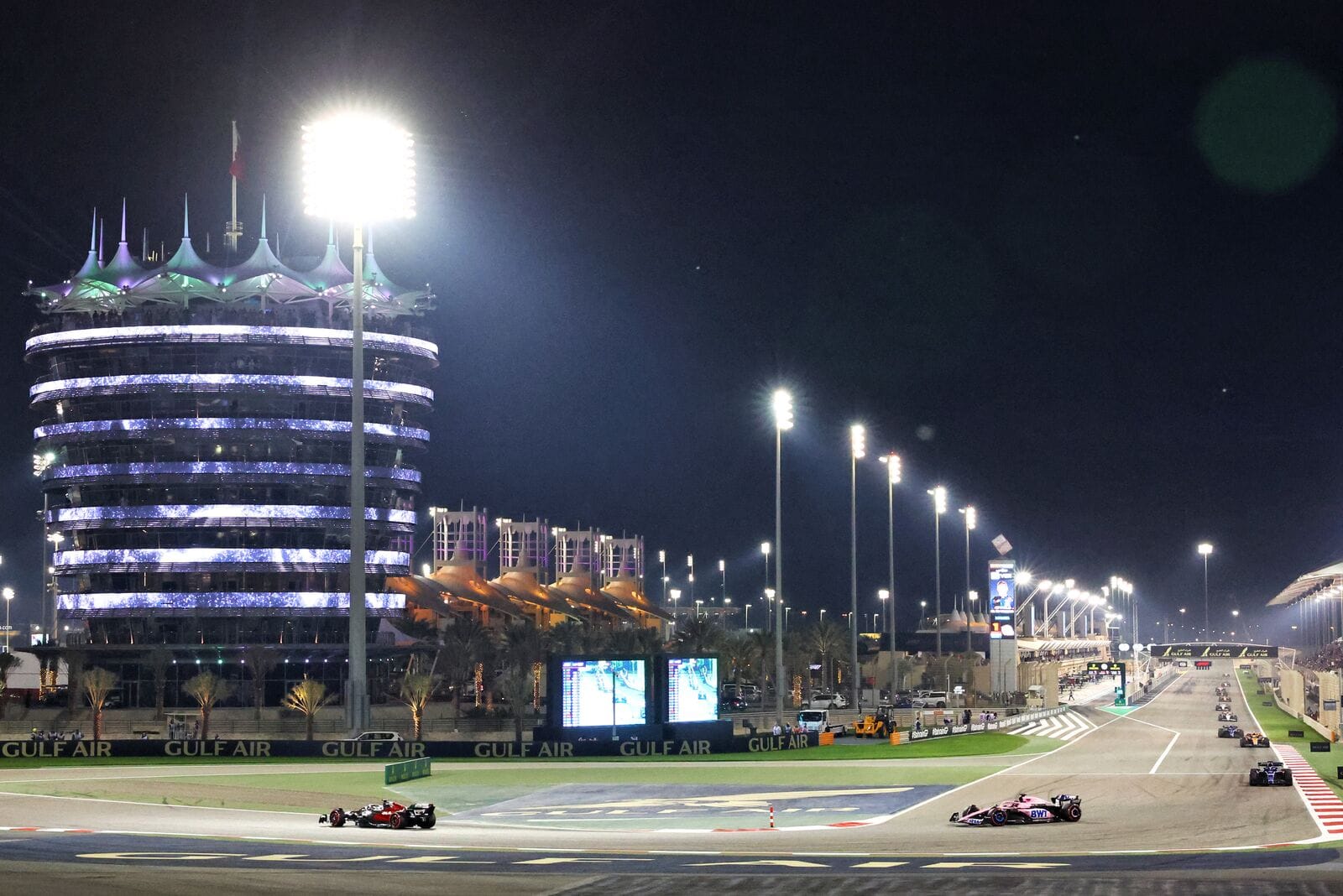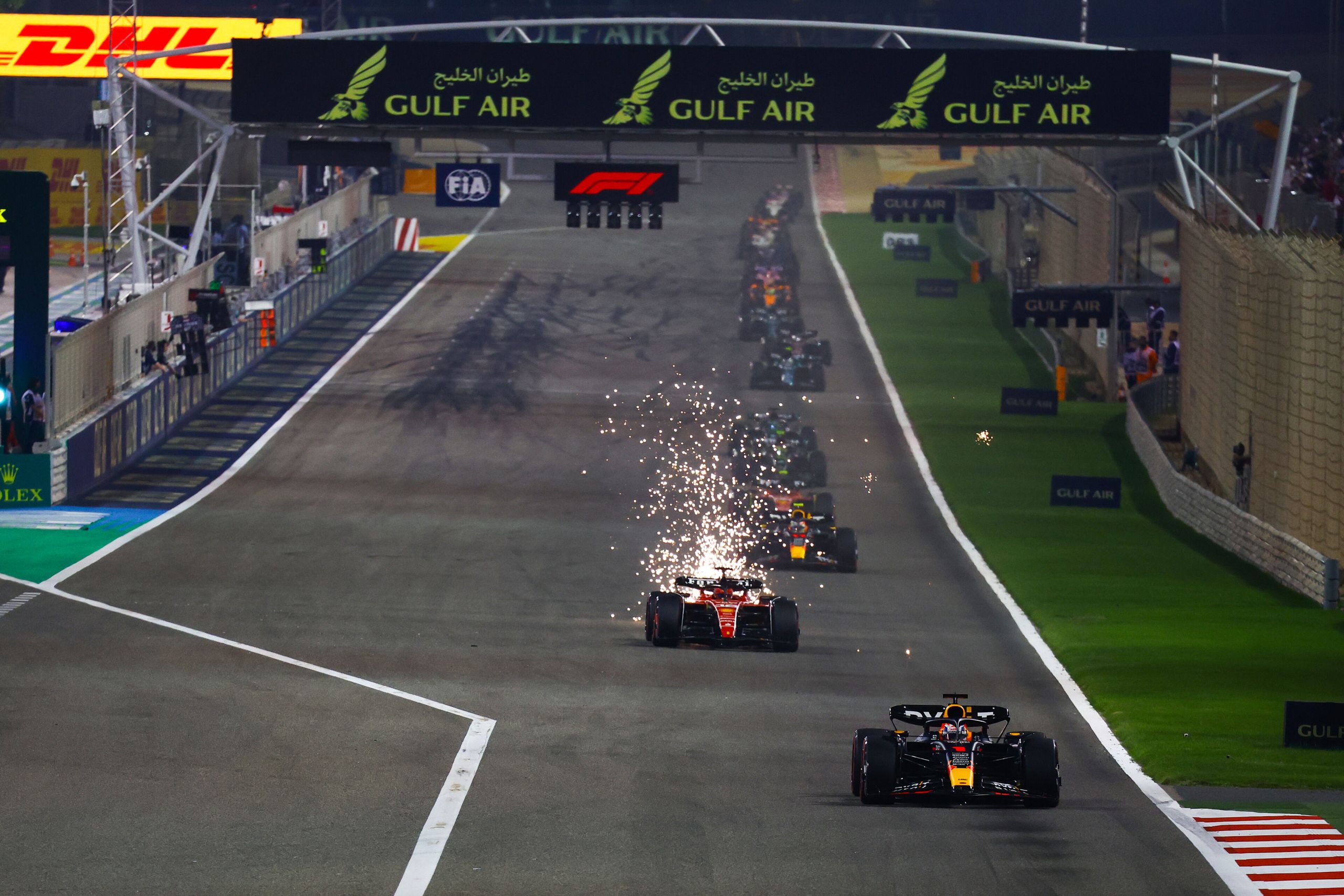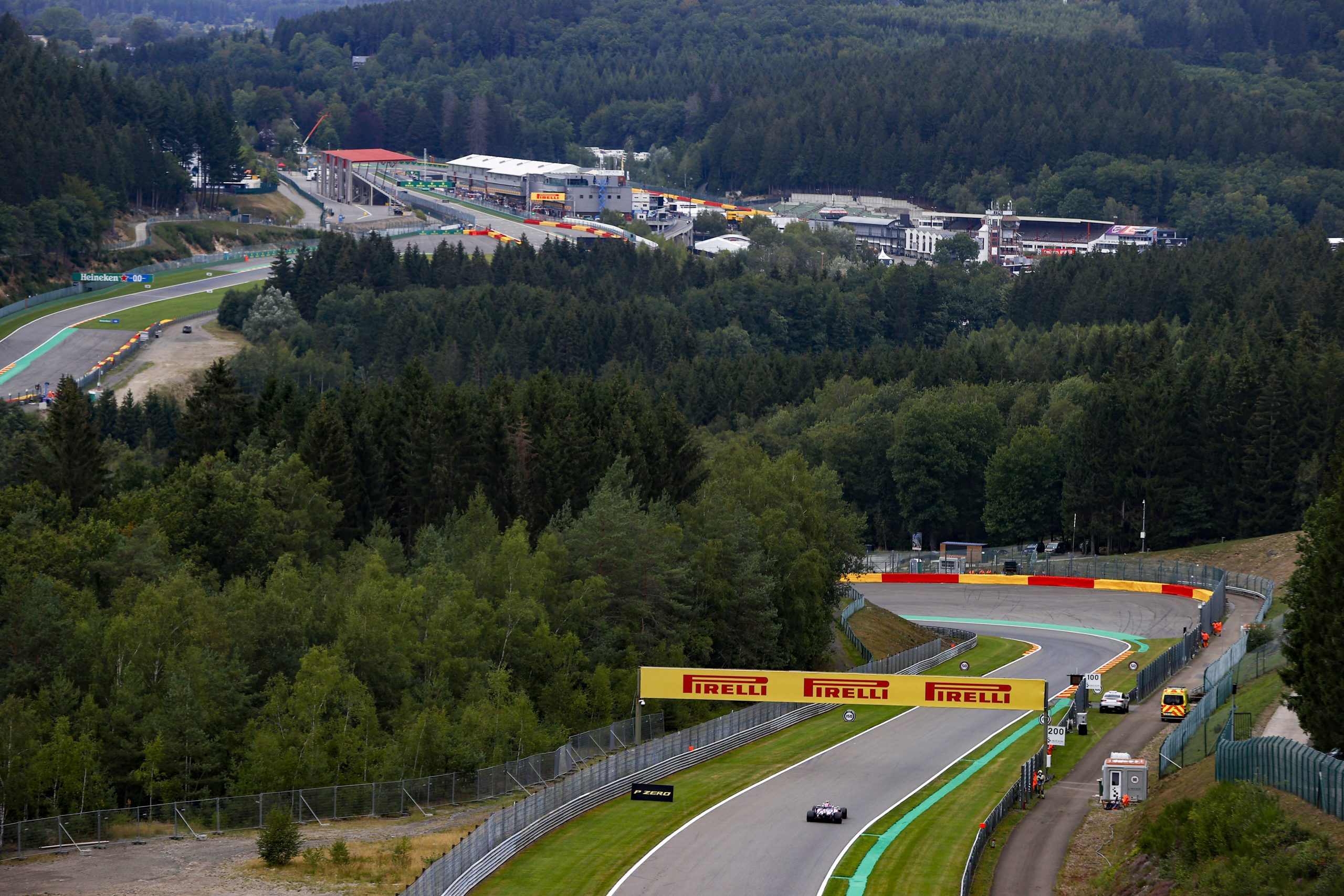Bahrain International Circuit
The Bahrain International Circuit is a state-of-the-art motorsport facility located in the Sakhir desert of Bahrain. Inaugurated in 2004, it quickly became recognized for bringing top-tier racing events to the Middle East, marking the region’s significant entry into the global motorsport arena. The circuit is renowned for its diverse racing offerings, catering to international, regional, and local events, with its most notable event being the Bahrain Grand Prix.
With a track measuring 5.412 kilometers in length, the Bahrain International Circuit offers challenges and excitement for drivers and teams, as well as a thrilling experience for spectators. The facility is not only a racing venue but also a centerpiece for automotive culture and entertainment in the Middle East. Its capacity to host over 400 events a year is a testament to its versatility and the fervent interest in motorsport within the region.
Apart from the Formula One spectacle, the circuit also supports various other racing formats such as drag racing and the FIA Formula 2 Championship. This versatility reflects Bahrain’s commitment to establishing itself as a hub for motorsport excellence. The Bahrain International Circuit is more than just a venue for speed; it’s a symbol of Bahrain’s modernization and growing presence on the international sporting stage.
History and Development
The Bahrain International Circuit has a rich history marked by several key developments since its inception. It has established itself as a prominent venue in the world of motorsports, influencing the region’s sporting landscape.
Inauguration and Early Years
The Bahrain International Circuit was officially inaugurated on April 4, 2004, becoming the first Formula One track in the Middle East. The Crown Prince, Shaikh Salman bin Hamad Al Khalifa, played a pivotal role in its establishment. In its inaugural year, it hosted the Formula One Bahrain Grand Prix, won by the renowned driver Michael Schumacher.
Major Milestones
2004: Marked as a significant year, with Michael Schumacher winning the first-ever Formula One Bahrain Grand Prix held at the circuit.
- Track Layouts: Bahrain International Circuit features several track configurations, allowing the venue to host a variety of motorsport events beyond Formula One.
- Infrastructure: The facility boasts two major pit complexes, accommodating multiple series and race events throughout the year.
Impact on Regional Motorsport
The Bahrain International Circuit has had a profound impact on regional motorsport development. It has set a standard for motorsport venues in the Middle East and has been instrumental in popularizing the sport in the region. The circuit’s success has paved the way for other countries in the Middle East to invest in motorsport infrastructure.

Circuit Specifications
The Bahrain International Circuit, a Hermann Tilke-designed track, exhibits a 5.412 km layout with a blend of high-speed straights and challenging turns that facilitate overtaking, embodying a pinnacle in modern motorsport circuit design.
Track Layout and Features
The circuit’s prominent features include a combination of 20 turns varying in complexity and speed, alongside substantial straights that contribute to its character. The Track Layout adheres to the stringent requirements of Formula One racing while ensuring versatility for other motorsport events. It boasts multiple configurations, with the Grand Prix layout being the most recognized, epitomizing a challenging and exciting experience for both drivers and spectators.
- Main Grand Prix Circuit:
- Length: 5.412 km
- Number of Laps for F1: 57
- Race Distance: 308.238 km
Hermann Tilke’s influence on the track is evident, as it features the German designer’s trademark style of long straights followed by a heavy braking zone, testing both the technical capabilities of vehicles and the prowess of their drivers.
Turn 1 and Key Overtaking Spots
Turn 1, named after Michael Schumacher, is a critical spot for overtaking, marked by a late-apex which drivers approach at high speeds following the main straight. Competitors often use this braking zone as an opportunity to outmaneuver their rivals.
Another significant overtaking location is found at Turn 12, where drivers encounter another hard braking zone at the end of a high-speed section. This turn is crucial as it leads onto a series of bends which can make or break the speed carried onto the subsequent straight. Mastery of these key areas can significantly improve lap times and race positioning.
Watch: How to Master the Bahrain International Circuit | Nico Rosberg
Racing Events
The Bahrain International Circuit is a center stage for a variety of high-profile racing events, showcasing skill and speed from various international racing series.
Formula 1 Bahrain Grand Prix
The Formula 1 Bahrain Grand Prix is a cornerstone event, occurring annually as part of the FIA Formula 1 World Championship. The circuit first hosted the Grand Prix in 2004, marking the first Formula 1 race in the Middle East, and continues to be a highly anticipated event on the F1 calendar.
WEC 8 Hours of Bahrain
As part of the FIA World Endurance Championship, the WEC 8 Hours of Bahrain invites endurance racing teams to compete in a grueling eight-hour contest. This event exemplifies the spirit of teamwork and stamina, as teams push their limits on the Bahrain International Circuit.
Porsche Carrera Cup Middle East
The Porsche Carrera Cup Middle East forms part of a global series of Carrera Cup racing events, tailored specifically for the Middle Eastern region. The series features identical Porsche 911 GT3 Cup cars, emphasizing driver skill in a highly competitive environment.
Gulf 12 Hours
The Gulf 12 Hours offers an endurance racing format split into two six-hour races, attracting a diverse field of GT and Prototype cars. This event tests the mettle of international teams as they navigate strategy and endurance across the circuit’s challenging layout.

Environmental Challenges
The Bahrain International Circuit confronts specific environmental challenges due to its desert location. Extreme temperatures and pervasive sand and wind conditions pose continuous hurdles for both the maintenance and operation of the Circuit.
Managing Desert Conditions
The desert environment of Bahrain creates extreme heat with temperatures often soaring, especially during the Formula 1 racing season. This necessitates advanced cooling systems to ensure the safety of drivers and the efficiency of the vehicles. The Circuit employs innovative materials and design features to reflect sunlight and reduce surface heat, a crucial adaptation to the desert conditions.
Wind and Sand Intrusion
Wind and sand intrusion are significant environmental factors that the Bahrain International Circuit must regularly tackle. With sand being a pervasive element of the desert landscape, it can affect visibility, track conditions, and the performance of racing cars.
- Effects on Visibility: Blowing sand can reduce driver visibility, creating safety hazards during races.
- Track Conditions: Sand accumulation on the track alters grip levels, affecting the stability and handling of the cars.
- Vehicle Performance: Sand infiltration in car components can lead to mechanical wear and inefficiencies.
Countermeasures include regular track cleaning, barriers, and landscaping designed to mitigate the intrusion of sand onto the circuit.
Facility and Venue Features
The Bahrain International Circuit is a premier motorsports hub with an array of facilities, including a dedicated karting track and drag strip. The venue showcases exceptional night race capabilities, thanks to its state-of-the-art floodlight system.
Karting Track and Drag Strip
The Karting Track at the Bahrain International Circuit offers an exhilarating experience for karting enthusiasts. It is designed to meet international standards, ensuring that both amateurs and professionals can enjoy the thrill of the race. In addition, the circuit includes a professional-grade Drag Strip for drag racing events, where speed and performance reach their peak in a controlled and competitive environment.
Night Race Capabilities
Equipped with Floodlights, the Bahrain International Circuit boasts impressive night race capabilities. It allows for high-profile racing events to occur after dusk, offering a cooler atmosphere and a unique visual spectacle. The illumination provided by these floodlights ensures that visibility is optimal, which is crucial for the safety and performance of the participants during nocturnal competitions.
Technological Innovations
The Bahrain International Circuit encompasses a range of advanced technological features aimed at enhancing both the racing experience and spectator engagement. Central among these are its notable floodlighting systems and circuit upgrades that accommodate night races and are instrumental in track performance.
Floodlighting Systems
The Bahrain International Circuit introduced a pioneering floodlighting system to facilitate night racing, making it one of the few venues in the world to offer such an experience. The system ensures optimal visibility for drivers and an immersive viewing experience for fans. The floodlights make use of energy-efficient technology, reducing power consumption and enhancing the circuit’s sustainability profile.
- Number of Floodlights: The 4500 floodlights have been strategically deployed around the 5.412 km track, illuminating the circuit with precision and minimal glare.
- Energy Efficiency: Utilizing the latest in lighting technology to minimize energy usage while maintaining clear track visibility.
Track Resurfacing and Upgrades
The Bahrain International Circuit has undergone significant resurfacing and upgrades to maintain its high standards and adapt to evolving racing demands. The updates ensure a balance between track longevity and providing a challenging yet fair racing surface for all categories of motorsports.
- Resurfacing Materials: High-quality tarmac materials have been selected for optimal grip and reduced tire degradation.
- Technological Upgrades: Advanced sensors and timing systems have been integrated into the track for real-time performance analytics.
Cultural and Economic Impact
Bahrain International Circuit has notably influenced both the cultural fabric and economic framework of Bahrain, showcasing the country’s commitment to the world of motorsport and leveraging it for tourism and investment growth.
Racing and Bahraini Culture
Bahrain has intertwined its rich heritage with contemporary sports to position itself as a critical hub in motorsport. The Bahrain International Circuit, known for hosting the Formula 1 Bahrain Grand Prix, reflects this strategic cultural embrace. Designed with elements that represent local culture and executed with modern engineering prowess, the circuit has become a symbol of national pride and a beacon of technological advancement in the Middle East.
Tourism and Economic Benefits
The Bahrain Grand Prix has turned into a significant tourist attractor, contributing an average of $100 million annually to the economy. Economic benefits don’t stop there; the event has inadvertently boosted various sectors including:
- Accommodation and Food & Beverage: Estimated at $81 million
- Travel: Valued at around $21 million
Bahrain’s proactive strategy has amplified its visibility on the global stage. Analysts estimate indirect economic impacts may reach nearly $500 million annually, highlighting investment opportunities and enhancing the perception of Bahrain and the broader Middle East as friendly and hospitable destinations for business and leisure.
Comparative Analysis
In exploring the Bahrain International Circuit (BIC), its unique features and competitive edge become apparent when directly contrasted with other Formula 1 venues.
Bahrain vs. Other F1 Venues
Yas Marina Circuit: Both the BIC and Yas Marina Circuit are illustrious venues in the Middle East that contribute significantly to their respective country’s exposure and economic development. Unlike the Yas Marina Circuit, however, BIC was the first Formula 1 track in the Middle East, opening in 2004.
| Feature | Bahrain International Circuit | Yas Marina Circuit |
|---|---|---|
| Opening Year | 2004 | 2009 |
| Track Length | 5.412 km | 5.554 km |
| F1 Grand Prix Debut | 2004 | 2009 |
| Night Races | Implemented | Known for its twilight races |
| Layouts | Multiple configurations | Permanent racing circuit |
| Record Lap (as of 2023) | Pedro de la Rosa, 1:31.447 (2005) | Max Verstappen, 1:26.103 (2021) |
Bahrain International Circuit, while shorter in length, has multiple track configurations allowing for a diverse range of motorsport events beyond F1, including drag racing and endurance events. In the context of Formula 1, BIC has historically provided unique challenges for drivers, with its desert setting contributing to variable sand influx on the track, which can affect grip and car performance.
Overtaking: When it comes to overtaking, an essential element of Formula 1 racing, Bahrain International Circuit’s layout provides several opportunities for this maneuver. Certain configurations, such as the one used for the Bahrain Grand Prix, have long straights followed by heavy braking zones, a combination conducive to overtaking maneuvers. In contrast, some tracks like Yas Marina Circuit, despite recent changes, have occasionally been criticized for offering fewer overtaking opportunities.
The track surface, temperature conditions, and technical sections, such as the configuration chosen for the F1 race, play a significant role in how both circuits influence car handling and strategy. The presence of slow corners leading onto long straights at BIC allows drivers to try different racing lines and overtaking tactics.
In essence, both circuits have their unique characteristics that provide different challenges to the drivers and the teams, with BIC standing out for its overtaking opportunities and diverse configurations catering to a broad spectrum of motorsport events.
Bahrain International Circuit – Frequently Asked Questions
This section provides concise answers to some of the most common questions about the Bahrain International Circuit.
How can I purchase tickets for events at Bahrain International Circuit?
Tickets for events at the Bahrain International Circuit can be purchased through the Circuit’s official website or authorized ticketing partners.
What are the accommodation options near the Bahrain International Circuit?
There are numerous accommodation options ranging from luxury hotels to more budget-friendly choices located in the proximity of the Circuit in Sakhir area, as well as in the capital city of Manama.
In which city is the Bahrain International Circuit located?
The Bahrain International Circuit is located in Sakhir, a desert area in the Southern Governorate of Bahrain.
Does Bahrain have two F1 tracks?
Bahrain has one Formula 1 track known as the Bahrain International Circuit. It features multiple track configurations that allow it to host a variety of motor racing events.
Is Bahrain F1 an asphalt circuit?
Yes, the Bahrain International Circuit is an asphalt circuit specifically designed for Formula One and other motorsport events.
Which city is Bahrain International Circuit?
The Bahrain International Circuit is situated in Sakhir, Bahrain. It is not located within a city but is close to several urban areas, with Manama being the nearest major city.

